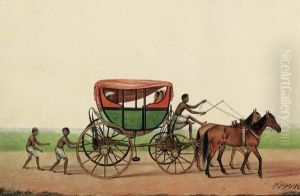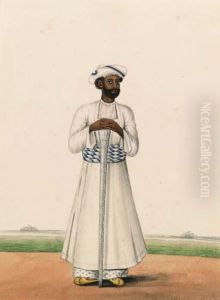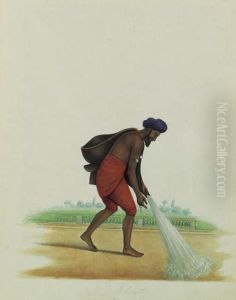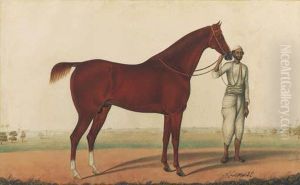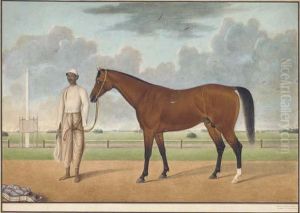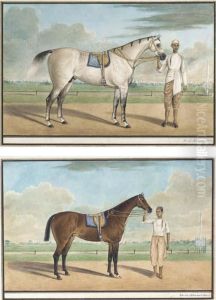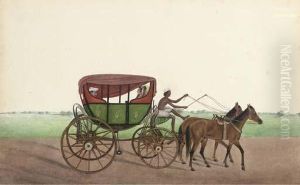Shaikh Muhammad Amir Of Karraya Paintings
Shaikh Muhammad Amir of Karraya, also known as Shaikh Muhammad Amir of Calcutta, was an Indian painter active during the 19th century. Born in 1829 in Karraya, a village in the Hooghly district of West Bengal, he belonged to a family of hereditary artists who were known for their skill in the Mughal style of miniature painting. Although the Mughal Empire was in decline during his lifetime, the artistic traditions associated with it continued to thrive in various regional courts and among private patrons.
Shaikh Muhammad Amir received his training from his father, Shaikh Latif, who was also a respected artist. Under his father's tutelage, Amir learned the intricate techniques of Mughal miniature painting, which is characterized by its detailed brushwork, vibrant colors, and elaborate compositions. He adapted these traditional methods to produce works that resonated with the changing tastes of the 19th-century art market, which was increasingly influenced by British colonial presence in India.
Amir's work was a unique blend of Indian and Western artistic traditions. He was known for his 'Company paintings,' a style that emerged in the 18th and 19th centuries as Indian artists started to produce works for European patrons, particularly employees of the British East India Company. These paintings often depicted Indian scenes and subjects but were executed with techniques and sensibilities that appealed to Western tastes.
Throughout his career, Amir worked on a variety of subjects, including portraits, scenes of everyday life, and depictions of festivals and ceremonies. His portraits of Indian nobility and British officials are particularly noted for their meticulous detail and vibrant color palette. Despite the influence of Western art forms, his work remained deeply rooted in the Indian artistic tradition, often incorporating elements from Hindu mythology and Mughal iconography.
Shaikh Muhammad Amir of Karraya's legacy is significant in the history of Indian art. He represents a generation of artists who bridged the gap between the traditional Indian art forms of the Mughal period and the emerging styles influenced by European contact and colonialism. His paintings are held in high regard and can be found in various art collections, museums, and galleries around the world. Amir passed away in 1873, but his contributions to the development of Indian art during a period of cultural transition continue to be celebrated.
